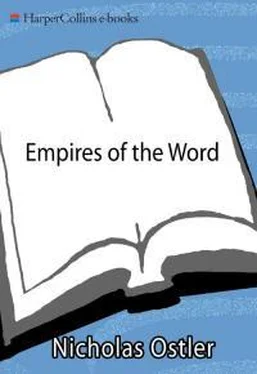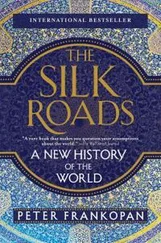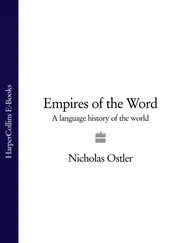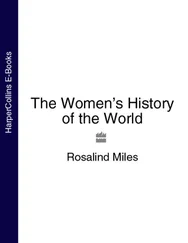Many now believe that the spread of all these Indo-European languages was achieved without massive change of people, but through wars that put a new elite in control of the old lands, with new languages spreading in the old populations through the prestige of the new social order. As to why these interlopers were able to force an entry, presumably it is no coincidence that this was also the era in which the use of iron became established.
But most immediately significant for the linguistic history of the Middle East is a third group, the Aramaeans, desert nomads from northern Syria speaking a Semitic language. They are first heard of as a particularly persistent enemy in an inscription of the same Tiglath Pileser I at the end of the twelfth century BC. Soon after we hear that Damascus was an Aramaean city. By the tenth century they had established themselves as a significant power, largely at the expense of the remaining Hittite-Luwian colonies. Then they spread out towards the east, despite resistance from Assyrian monarchs, and by the end of the ninth century there were apparently settlements of them all over the land of Sumer and Akkad. The succession to the throne of Babylon was not routine in this period, and at least one dynasty, Bît Bazi in the early tenth century, appears to have been Aramaean. The Chaldaeans ( Kaldŭ ) were also an Aramaean tribe who settled in Sumer, and went on to found the last Babylonian dynasty in the seventh to sixth centuries, including Nabupolassar, Nebuchadrezzar II and Nabonidus. The Aramaeans had made themselves very much part of the establishment.
This must be part of the explanation for the way in which, beginning in the eighth century, their language came to replace Akkadian as the universal medium of Mesopotamia, and soon (as Assyria conquered Syria and Palestine) established itself as the lingua franca of the whole Fertile Crescent. This was not a culture-led expansion, since the Aramaeans are not associated with any distinctive style or civilisation of their own; nevertheless, they were the ones who brought simple alphabetic writing, the invention of their neighbours the Phoenicians, into the heart of the old empire, where for over two thousand years all culture and administration had been built on skill in the complicated cuneiform writing. They had thereby revolutionised its communications, and perhaps its social structure as well. Twenty-two simple signs could now do the work previously requiring over six hundred.
While this was going on in Asia, the Phoenicians themselves, strung out along the Mediterranean coast of what is now Lebanon, were expanding, or rather exploring and exploiting, in the opposite direction. In language, the Phoenicians (or Canaanites, as they called themselves) were very similar to their neighbours inland and to the south, the Hebrews; but they had a very different attitude to their homeland.
’Phoenicia’ is a linguistic, and even more an economic, expression for the trading cities of coastal Lebanon. [16] There are 6 million tons of ancient slag, covering 3/4 of a square kilometre, at the silver mines of Rio Tinto, near Huelva (probably the site of Tartessos, believed to be the same as Tarshish in Hebrew). Despite this massive activity, extending over centuries, archaeological evidence tends to show that Phoenician settlements in Spain were commercial enclaves rather than towns (Markoe 2000: 182-6).
There is no record of a political unit linking them even as a league, but from the middle of the second millennium BC this line of a dozen or so independent cities (Byblos, Sidon and Tyre the most famous among them) had established themselves as the preferred centres for the supply of copper and tin from Cyprus, timber from Lebanon and luxury goods, especially clothing and jewellery. Since either their suppliers or their customers (especially Egypt, for the timber) often lived overseas, this fostered the development of ships and the know-how for navigation. With these, uniquely in the Middle East, the cities had the wherewithal for exploration much farther afield. The original expeditions may have been earlier (ancient historians suggest the end of the twelfth century), but it is clear that by the eighth century there was a network of Phoenician settlements from one end of the Mediterranean to the other, with particular concentration on Sicily, Sardinia, the north-western shores of Africa and Cadiz (Phoenician gader , ‘the fortress’). Mostly they were trading posts, and above all mining outlets, rather than cities, but in one case the settlement became much more than a commercial venture. This was Carthage, situated on a natural harbour in modern Tunisia, and soon developing not just a trade network but an empire of its own, in North Africa, Sicily and Sardinia.
By their presence, the Phoenician settlements will have spread far and wide a sense of what the cultivated and literate society of the Near East was like, as well as opening up a long-distance export trade in metals. The Phoenicians were the globalisers of Mesopotamian culture. Most concretely, they spread knowledge of their alphabetic writing system to the Greeks and Iberians, and just possibly also to the Etruscans and Romans; so they can claim to have given Europe its primary education.
Phoenician could be heard all round the Mediterranean, especially in its islands and on its southern rim, for most of the first millennium BC. Yet linguistically it had very little long-term impact on Europe. The Greeks and others accepted, quite explicitly, the Phoenicians’ writing system as the basis of their own (using the term phoinik$ēAia grámmata ), but not a single element of their language. This is partly perhaps a comment on how little of their culture the Phoenicians, always thinking of themselves as outsiders, only there on business, were in fact passing on to their new customers or partners. [17] Another ideographic system, invented at the other end of Asia, had similar effects. The Japanese, Korean and Vietnamese languages, all of which became literate through the use of Chinese characters, have sustained major linguistic (and cultural) borrowings from Chinese which are by and large still present today.
But further, it shows how much more abstract a tool an alphabet is than an ideographic writing system. With an alphabet, properly understood, you get a means of cleanly writing your own language, without further baggage. Contrast this with the knock-on effects when ideas of Sumerian cuneiform had been taken up. Two thousand years later, Babylonian scribes were still using bits of Sumerian as shorthand symbols for equivalent words in Akkadian, and indeed had still not worked out a way to express all the Akkadian sounds when they went beyond those in Sumerian. Nor was this a particular weakness on the part of Akkadian scribes: similar effects can be seen in other languages written in cuneiform, such as Hittite and Urartian. [18] The one exception is Bactrian, later to become the language of the Kushāna empire (first to second centuries AD), written in the Greek alphabet. This shows the lasting cultural influence of the independent Greek dynasties in the far east, whom the Kushāna supplanted.
Paradoxically, then, Phoenician had little linguistic impact in Europe, even though the effect its speakers had on the languages they contacted was truly momentous. But Punic, as the same language is known when spoken by Carthaginians, did get established in North Africa. It evidently long survived the downfall of Carthage as a state in 146 BC, some 655 years after its foundation, and even the Latin-speaking Roman administration that followed for another five hundred years, since Augustine of Hippo is still quoting words of the language in the fifth century AD, remarking on its utility for a priest in a country parish in Numidia. [246] Lancel (1997: 437).
But tantalisingly and heartbreakingly, this language, once so widely used and the vehicle that had spread alphabetic literacy to Europe, could not ensure the survival of a single book from antiquity.
Читать дальше











